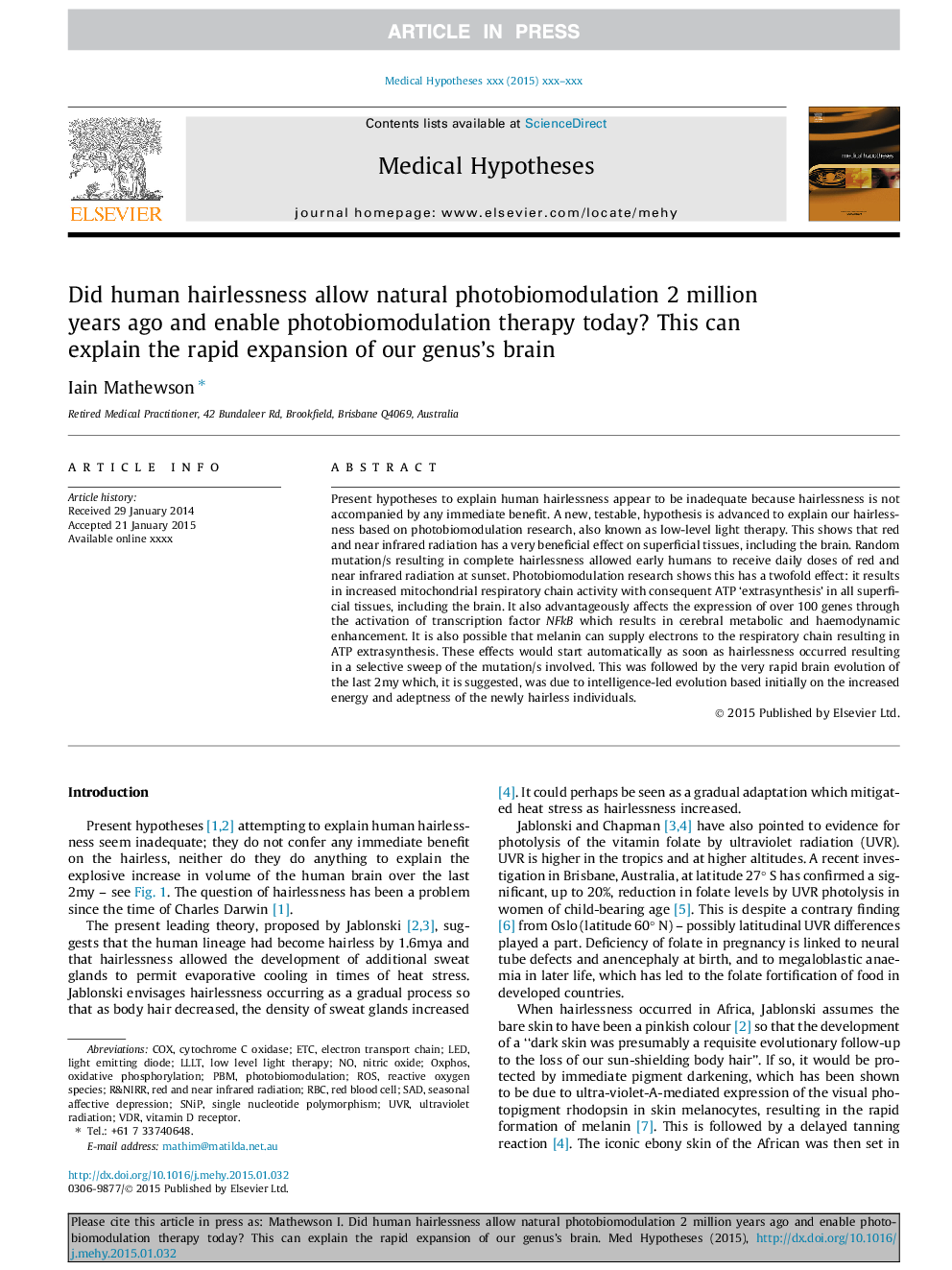| Article ID | Journal | Published Year | Pages | File Type |
|---|---|---|---|---|
| 5811367 | Medical Hypotheses | 2015 | 8 Pages |
Abstract
Present hypotheses to explain human hairlessness appear to be inadequate because hairlessness is not accompanied by any immediate benefit. A new, testable, hypothesis is advanced to explain our hairlessness based on photobiomodulation research, also known as low-level light therapy. This shows that red and near infrared radiation has a very beneficial effect on superficial tissues, including the brain. Random mutation/s resulting in complete hairlessness allowed early humans to receive daily doses of red and near infrared radiation at sunset. Photobiomodulation research shows this has a twofold effect: it results in increased mitochondrial respiratory chain activity with consequent ATP 'extrasynthesis' in all superficial tissues, including the brain. It also advantageously affects the expression of over 100 genes through the activation of transcription factor NFkB which results in cerebral metabolic and haemodynamic enhancement. It is also possible that melanin can supply electrons to the respiratory chain resulting in ATP extrasynthesis. These effects would start automatically as soon as hairlessness occurred resulting in a selective sweep of the mutation/s involved. This was followed by the very rapid brain evolution of the last 2my which, it is suggested, was due to intelligence-led evolution based initially on the increased energy and adeptness of the newly hairless individuals.
Keywords
Related Topics
Life Sciences
Biochemistry, Genetics and Molecular Biology
Developmental Biology
Authors
Iain Mathewson,
